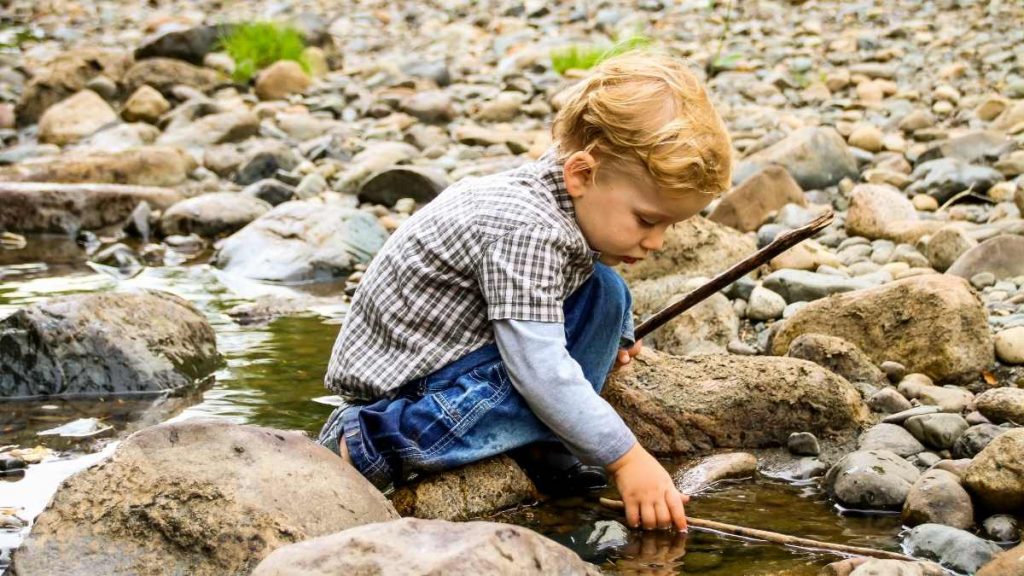More and more parents are becoming interested in homeschooling as an alternative to traditional education for their children.
While it is a teaching method, it naturally accompanies the child’s development, so we will offer nine key education ideas to apply to your child’s education.
Nine Keys to Apply To Your Child’s Education

1) Encourage their curiosity
Children are naturally curious. It is important, perhaps most important, that children are motivated to learn. Motivation is based on curiosity to learn about the world around them.
Let them experience the pleasure of discovering and learning from their discoveries for themselves rather than receiving knowledge from others. Keeping the curiosity engine running will allow them to find and assimilate concepts naturally.
So, as parents, our job will be to encourage their innate curiosity and let them discover and learn independently, even if they make mistakes.
2) Keep in mind the sponge effect.
That “children are sponges” is one of the basic principles of philosophy, the absorbent mind. They learn unconsciously, without knowing that they are learning, just as they learn spontaneously to crawl, walk, etc.
They learn from their experiences, for example, nature, what they touch, and the people around them. What they internalize unconsciously passes to the consciousness in the form of teaching.
There is only one difference: the sponge has a limited absorption capacity, while the child’s mind is infinite. Knowledge enters their head through the simple fact of living.
3) Offer him a prepared environment
What is this prepared environment? It is that the child needs a favorable environment for his life. Since it is a self-directed learning process, providing an environment that favors this learning without adult supervision is important.
You can create a style of play corner at home with elements arranged in a natural, unforced way, where repetition and harmony are the norms so that the child can choose the ones that interest him most at any given moment.
There must be space for movement and the child’s sensory development through materials that invite him to discover.
The prepared environment is based on simplicity, beauty, and order. It should be bright and warm, including plants, art, music, and books. But it is not only about a physical environment but also about creating a familiar environment that allows them to grow with joy.
4) Identify their sensitive periods
Sensitive periods are periods of age where the child has greater ease in acquiring particular skills with little effort. The child’s interest is instinctively focused on a specific part of his environment.
They have a limited duration, and they do not recur, so it is important to promote these skills (language, reading, movement, social skills, order, etc.) at the right time, making the most of their potential.
The best way to detect their sensitive periods is to carefully observe their behaviors, which activities they perform repetitively, and where their interest is focused. Based on that, reinforce the environment allowing him to develop those skills freely.
5) Promote autonomy

Most parents complain that we do everything for our children, go after them picking up everything, dress them and help them do everything. It’s not their fault; it’s ours. If we didn’t let them, a lot of that “work” would be taken on by the children themselves if we allowed them to do it.
As parents, we do them a huge favor if we stop doing everything for them and let them be autonomous to grow up. Start by establishing small personal and home responsibilities, such as brushing their teeth, setting the table, and tying their shoes.
A table based on the philosophy has been developed to know what tasks they can do at each age to know when they are capable.
6) Give them the freedom to learn
Freedom allows the child to choose what they want to learn at each stage of their development, according to the sensitive periods we discussed.
We must allow them to be free to explore, play, move and socialize at their own pace. It facilitates an environment for the child to experience their freedom within a framework of clear limits that provide security and stability.
We have already talked about the importance of free play in childhood. Free and spontaneous play arises from the child’s own curiosity and initiative. Play without limits or guidelines.
The research focused on free play assures that people who had free time to play in an unstructured way as children become adults with higher self-esteem and resilience.
7) Offer them an orderly environment.
Order is critical, considering that the philosophy is based on self-learning. The child learns by himself, so you must contain him within an orderly environment that facilitates that learning.
We are not talking about an obsessive order or an order that controls the child, but that everything has its place and that if they need something, they can be sure that they will find it in that place.
The order makes their environment predictable and gives them the confidence to learn. To provide a practical example, if you set the table at home, we must always have the dishes in the same place within their reach so they can do it without help.
Adapt your home to children.
Simplicity, cleanliness, and accessibility are key to developing a sense of order.
8) Allow them to learn from nature.

Contact with nature offers them a world and a great playground to learn.
The natural environment is where children discover and explore freely without needing anything else; technology cannot replace it. They observe the rhythm of nature and the behavior of animals and insects and learn to be responsible for the environment.
The child, guided by an inner teacher, works tirelessly with joy to build the man. We educators can only help.
9) Guide it, but do not direct it.
As a parent or educator, the adult is responsible for guiding the child and introducing him to the environment respectfully and lovingly. Be a conscious observer, providing the necessary tools for learning, but without interfering.
Respect for their needs and rhythms is basic for the child to develop freely, without forcing or directing.
And remember that you are the mirror in which they look, so the example you give your child will be internalized and learned.





